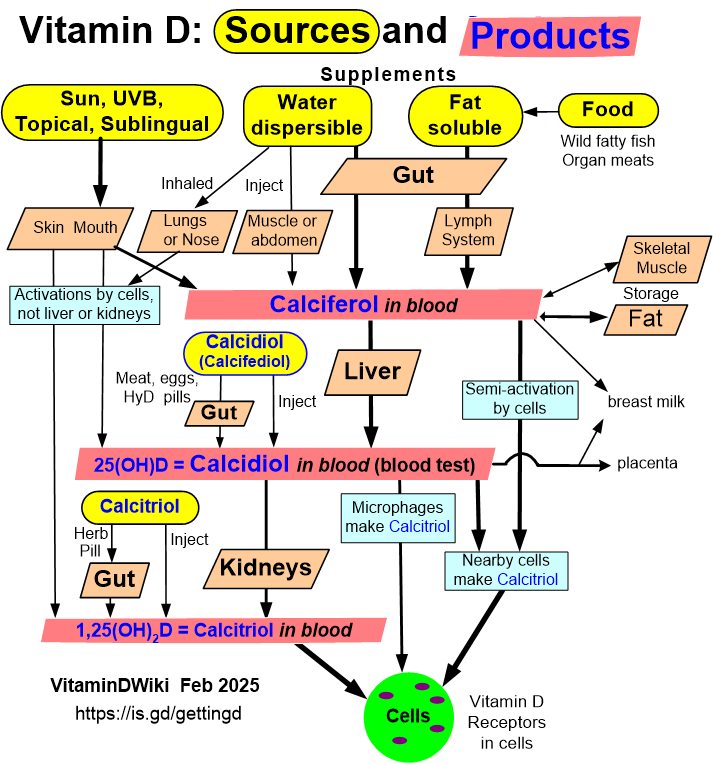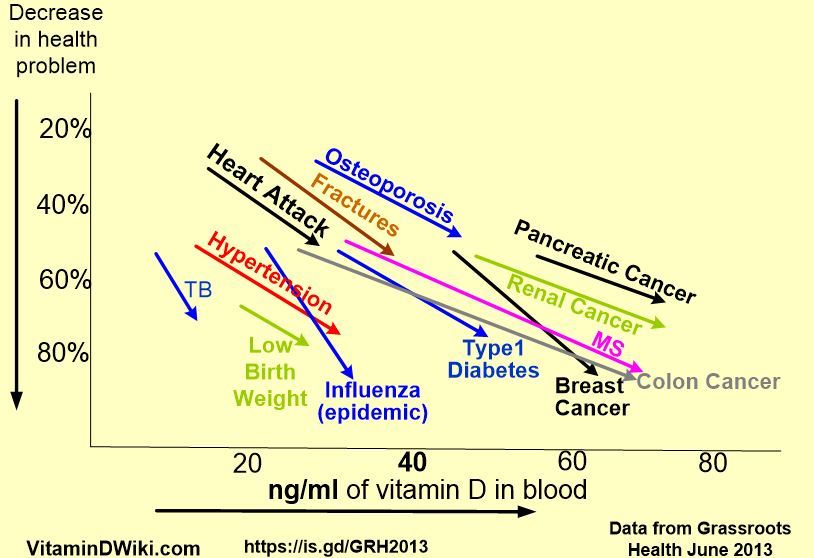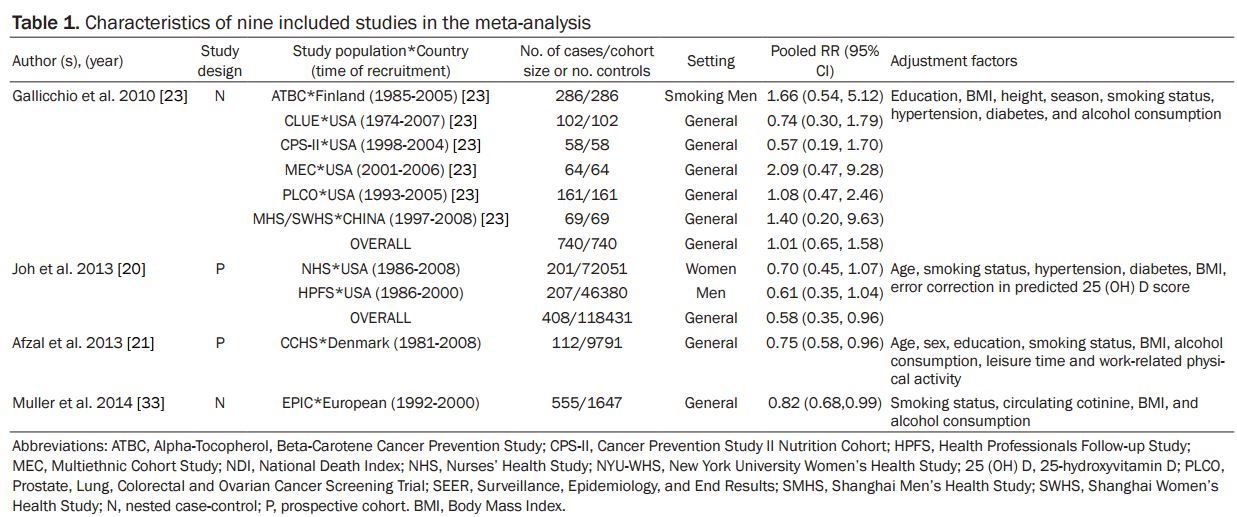Kidney cancer 22 percent less likely if high vitamin D – meta-analysis
Examining the association of circulating 25-hydroxyvitamin D with kidney cancer risk: a meta-analysis
Int J Clin Exp Med. 2015; 8(11): 20499–20507. Published online 2015 Nov 15, PMCID: PMC4723811
Guangzheng Lin,1,* Ling Ning,2,* Di Gu,1,* Shi Li,1 Zhe Yu,1 Qicheng Long,1 Li-Na Hou,3 and Wan-Long Tan1
 click on chart for details
Huge decrease in cancers as increase vitamin D
click on chart for details
Huge decrease in cancers as increase vitamin D

📄 Download the PDF from VitaminDWiki

Objective: To examine the relationship between circulating 25-hydroxy-vitamin D (25 (OH) D) and risk of kidney cancer. Methods: We searched PubMed, EMBASE, and Web of Science databases through August 31, 2015 for eligible studies. Pooled ORs with 95% confidence interval were calculated using fixed effect models. All data analyses were performed with STATA version 12.0.
Results: The final analysis included 2 prospective cohort studies and 7 nested case-control studies, with a total of 130, 609 participants and 1, 815 cases of kidney cancer. No obvious heterogeneity was observed between individual studies. The results of this study revealed that higher circulating 25-hydroxyvitamin D levels were associated with lower risk of kidney cancer (OR=0.79, 95% CI 0.69-0.91; P value for heterogeneity: 0.61, I2=0%). After stratified by geographical region, the similar association was detected in European studies (OR=0.81, 95% CI 0.69-0.94; P value for heterogeneity: 0.38, I2=0%), though no significant association was observed in the USA studies (OR=0.73, 95% CI 0.51-1.04; P value for heterogeneity: 0.44, I2=0%).
Conclusion: Our present findings suggest that higher levels of circulating 25-hydroxyvitamin D could reduce the risk of kidney cancer by 21%. Further well-designed large-scaled prospective studies and randomized controlled trials are warranted to provide more conclusive evidence.
